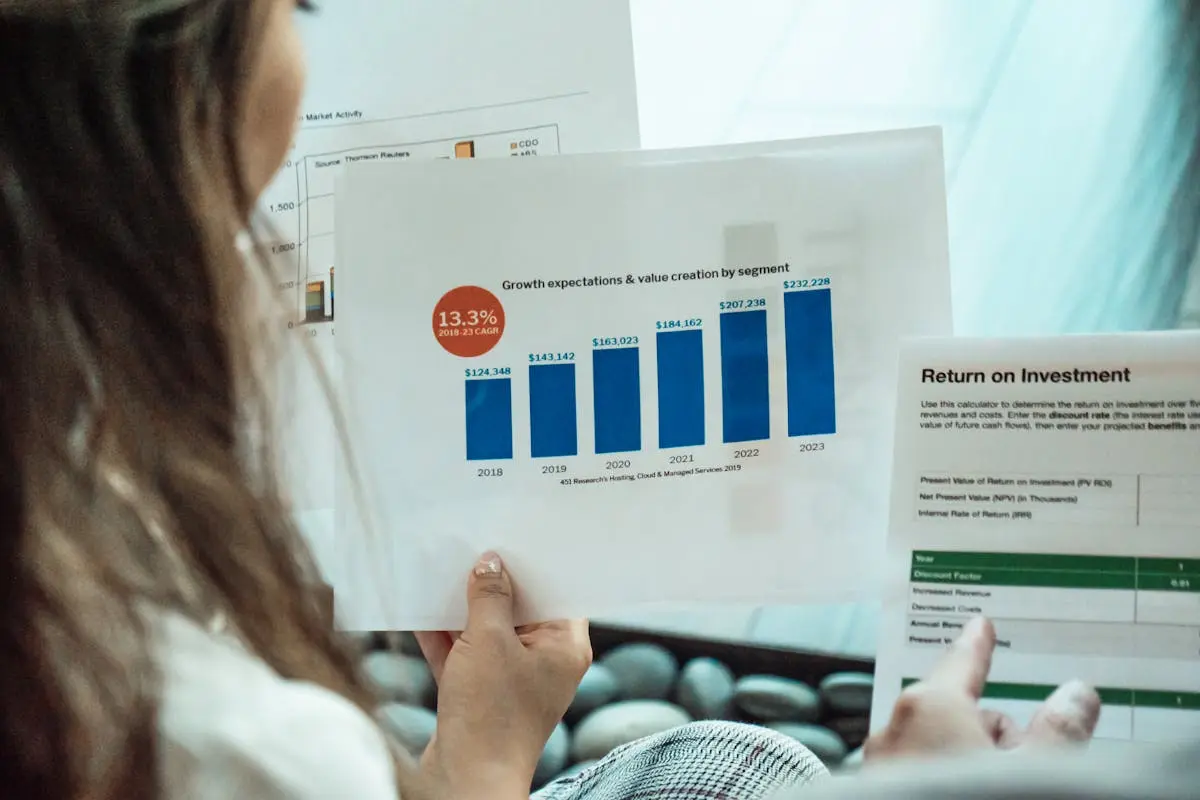In today’s competitive landscape, small businesses are constantly seeking effective ways to optimize their marketing strategies. Understanding and improving marketing ROI (Return on Investment) can significantly impact growth and sustainability. This blog explores various approaches small businesses can take to enhance marketing ROI, from identifying clear goals to leveraging digital tools.
Understanding Marketing ROI and Its Importance
Marketing ROI is crucial for small businesses to evaluate the effectiveness of their marketing efforts. This section will explain what marketing ROI is, how to calculate it, and why it matters for small business sustainability.
Calculating marketing ROI is not just about determining how much money was made compared to how much was spent; it also includes understanding the broader impact of marketing strategies. By analyzing variables such as customer engagement, brand awareness, and market share, small businesses can gain a holistic view of their marketing success. For instance, a campaign that appears to yield low immediate financial returns might contribute significantly to long-term customer loyalty and lifetime value.
Furthermore, improved marketing ROI means that small businesses can reallocate resources more effectively. By identifying which strategies yield the highest returns, businesses can ensure that each dollar spent is maximized towards initiatives that drive growth. This iterative feedback loop fosters a culture of efficiency and responsibility within the marketing team.
Setting Clear Marketing Goals
Defining specific, measurable, achievable, relevant, and time-bound (SMART) goals is essential for small businesses. This segment discusses how setting clear objectives can lead to improved marketing performance.
When small businesses articulate their marketing goals, they create a clear roadmap to follow. For example, a bakery may set a goal to increase local foot traffic by 30% over three months by hosting weekly events. This objective becomes the foundation for several targeted marketing efforts, from social media promotion to in-store specials.
SMART goals not only help to track progress, but they also motivate the marketing team. Employees often feel empowered when they know what success looks like and how their efforts contribute to the larger picture. Clarity in marketing goals allows teams to stay focused, prioritize actions, and allocate budget effectively, ultimately leading to enhanced marketing ROI.
Leveraging Data Analytics Tools
Small businesses can harness data analytics tools to track customer behavior and campaign performance. This section highlights effective tools and methodologies for analyzing marketing data.
Utilizing analytics platforms such as Google Analytics or social media insights grants small businesses the power to make informed decisions based on real-time data. For example, by monitoring which social media posts garner the most engagement, a small local coffee shop can pivot its content strategy to highlight products that resonate with customers more effectively.
Moreover, segmentation features available in these tools allow businesses to identify distinct customer personas based on behavior. This enables targeted advertising campaigns tailored to each group’s unique preferences, therefore driving higher engagement rates and improved marketing ROI. Capitalizing on such insights transforms marketing from a guessing game into a strategic endeavor.
Targeting the Right Audience
Identifying and targeting the right demographic is crucial for maximizing marketing efforts. Here, we explore strategies for audience segmentation and understanding customer needs.
For instance, a local gym might discover that their primary clientele consists of young professionals aged 25-35. By focusing their advertising efforts specifically on this demographic, they can create personalized campaigns that speak directly to this group’s values, such as convenience and community.
Furthermore, conducting surveys and gathering feedback can provide invaluable insights into the preferences and needs of your audience. Engaging with customers directly not only enriches your understanding but also fosters loyalty and trust.
Optimizing Digital Marketing Channels
This section delves into the optimization of various digital marketing channels such as social media, email marketing, and pay-per-click advertising to ensure a higher return on investment.
To begin with, optimizing social media presence requires understanding the platforms where the target audience is most active. If a pet grooming business discovers that their audience primarily engages on Instagram, focusing efforts on creating visually appealing content, such as before-and-after photos of furry clients, can lead to higher engagement and, eventually, more bookings.
Email marketing also remains a powerful tool when implemented correctly. By segmenting email lists and personalizing campaigns, small businesses can see increased open and click-through rates. For example, sending tailored promotions to previous customers based on their past purchases can entice them back, amplifying marketing ROI.
Testing and Refining Marketing Strategies
Continuous testing and refinement of marketing strategies are vital. This segment will discuss A/B testing, customer feedback collection, and other tactics to enhance marketing effectiveness.
A/B testing is especially beneficial in determining the effectiveness of various marketing approaches. For instance, a small retailer might want to see whether a red button or a green button on their website generates more clicks. By running a test, they can make data-backed decisions that enhance overall conversion rates.
Listening to customer feedback is equally important. By understanding what customers think about their products or services, businesses can identify potential areas for improvement. This might involve simple surveys or using social media to engage in conversations, allowing small businesses to continually refine their marketing strategies and, consequently, improve marketing ROI.
Maximizing Marketing ROI for Future Growth
By focusing on data-driven decisions, targeting the right audience, and continually refining marketing efforts, small businesses can achieve substantial improvements in their marketing ROI. Embracing creativity and innovation will be key to navigating the challenges ahead.







